16.03.2019
NASA Invites Media to 17th SpaceX Cargo Launch to Space Station
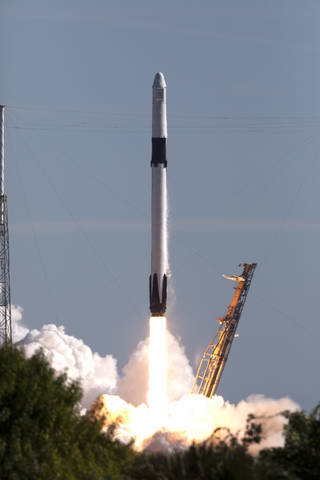
Media accreditation now is open for the next SpaceX delivery of supplies, equipment and science investigations to the International Space Station.
A SpaceX Dragon cargo spacecraft is scheduled to launch no earlier than late April on a Falcon 9 rocket from Space Launch Complex 40 at Cape Canaveral Air Force Station (CCAFS) in Florida on the company’s 17th Commercial Resupply Services contract mission for NASA. Media prelaunch and launch activities will take place at NASA’s Kennedy Space Center and neighboring CCAFS.
Media accreditation deadlines are as follows:
- International media without U.S. citizenship must apply by 4:30 p.m. Thursday, March 21, for access to CCAFS, or by 4:30 p.m. Sunday, April 7, for access to Kennedy media activities only.
- U.S. media must apply by 4:30 p.m. Sunday, April 14.
All media accreditation requests should be submitted online at:
For questions about accreditation, please email ksc-media-accreditat@mail.nasa.gov. For other questions, contact Kennedy’s newsroom at 321-867-2468.
The International Space Station is a convergence of science, technology and human innovation that demonstrates new technologies and enables research not possible on Earth. The space station has been occupied continuously since November 2000. In that time, more than 230 people and a variety of international and commercial spacecraft have visited the orbiting laboratory. The space station remains the springboard to NASA's next great leap in exploration, including future missions to the Moon and eventually to Mars.
Quelle: NASA
----
Update: 16.04.2019
.
Rocket Launch: April 26, 2019, 5:55 AM ET | SpaceX Falcon 9 CRS-17
Apr 26, 2019 5:55 AM ET Kennedy Space Center LC-40SpaceX Falcon 9 CRS-17
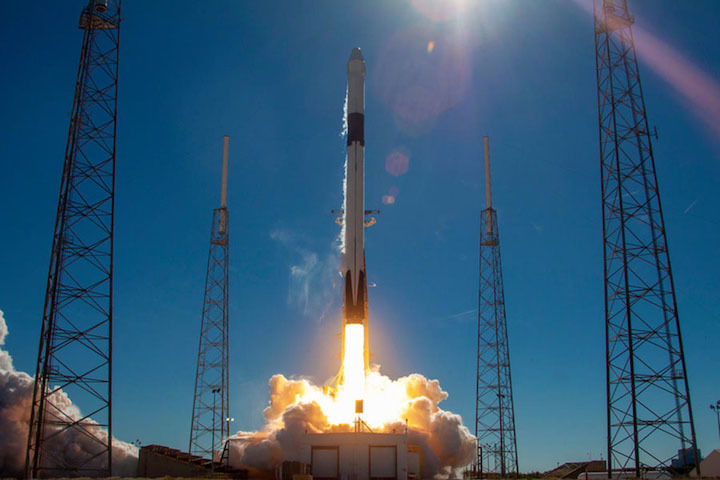
MISSION
A SpaceX Falcon 9 rocket will launch a Cargo Dragon spacecraft to deliver the next shipment of supplies and equipment to the International Space Station. This is the 17th SpaceX mission under NASA’s Commercial Resupply Services contract.
LAUNCH VIEWING
Witness liftoff from the main visitor complex (included with daily admission), or from viewing locations through NASA’s gates with a Launch Transportation Ticket (LTT), which may be purchased in addition to daily admission. At this time, no LTTs are available for this launch. If LTTs become available at a later date, tickets are announced and sold as soon as possible after a confirmed date and time is announced.
Quelle: KSC
----
Update: 16.04.2019
.
NASA Highlights Science on 17th SpaceX Resupply Mission to International Space Station
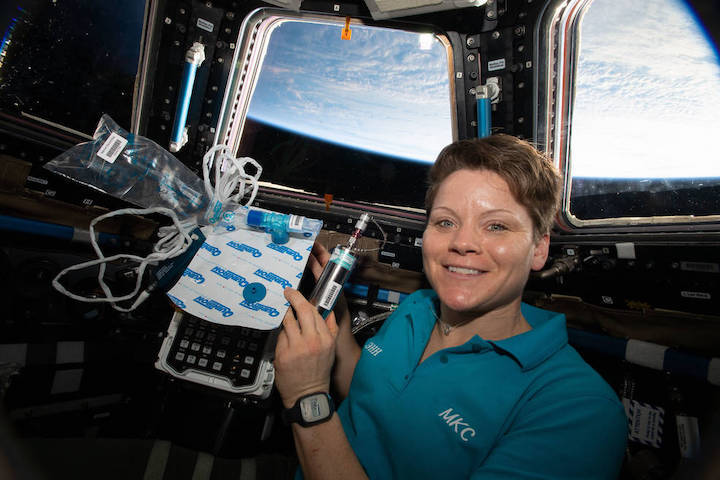
NASA will host a media teleconference at 11 a.m. EDT Monday, April 22, to discuss select science investigations launching on the next SpaceX commercial resupply flight to the International Space Station.
Audio of the teleconference will stream live online at:
SpaceX is targeting 5:55 a.m. Friday,April 26, for the launch of its Dragon spacecraft on a Falcon 9 rocket from Space Launch Complex 40 at Cape Canaveral Air Force Station in Florida.
Participants in the briefing will be:
- Annmarie Eldering, project scientist at NASA’s Jet Propulsion Laboratory, who will discusshow the Orbiting Carbon Observatory-3 (OCO-3), to be installed on the Japanese Experiment Module-Exposed Facility of the orbiting laboratory, observes the complex dynamics of the Earth’s atmospheric carbon cycle.
- Gisela Detrell, head of the Life Support System research group at the Institute of Space Systems - University of Stuttgart, Germany, who will talk about Photobioreactor, an investigation aimed at demonstrating the use of biological processes to create a hybrid life support system. On future long-duration missions, this approach could reduce the amount of food, water, and other essentials that crews have to bring from Earth.
- Lucie Low of the National Center for Advancing Translational Sciences at the National Institutes of Health, who will discuss tissue chips, or organs-on-chips. Tissue chips model the detailed physical structure of human tissue using cells grown on an artificial scaffold, enabling higher-accuracy disease modeling and drug testing.
- Alan Grodzinsky of the Massachusetts Institute of Technology, who will discuss his team’s tissue chip investigation that will study the effects of spaceflight on musculoskeletal disease biology.The goal of this research is to treat the root cause of post-traumatic osteoarthritis disease and prevent permanent joint damage, rather than mask the symptoms with painkillers later in life.
To participate in the teleconference, media must contact Joshua Finch at 202-358-1100 or joshua.a.finch@nasa.gov by 4 p.m. Friday, April 19, for dial-in information.
SpaceX’s Dragon spacecraft also will carry crew supplies and hardware to the orbiting laboratory to support the Expedition 59 and 60 crews for the 17th mission under NASA’s Commercial Resupply Services contract.
The space station is a convergence of science, technology and human innovation that demonstrates new technologies and enables research not possible on Earth. The orbiting laboratory has been occupied continuously since November 2000. In that time, more than 230 people, and a variety of international and commercial spacecraft, have visited the orbiting laboratory. The space station remains the springboard to NASA's next great leap in exploration, including future missions to the Moon and eventually to Mars.
Quelle: NASA
----
Update: 20.04.2019
.
Space Coast's next launch – and landing – of SpaceX Falcon 9 delayed
The planned launch of a SpaceX Falcon 9 rocket from Cape Canaveral with supplies destined for the International Space Station has been pushed back to the last day of the month, NASA confirmed Friday.
Teams were targeting early next Friday, April 26, for liftoff from Launch Complex 40 with an uncrewed Dragon spacecraft, but NASA opted to push the mission back to 4:22 a.m. Tuesday, April 30. Launches to the ISS require instantaneous windows, so it must launch at that time or be delayed to another day.
Space Coast residents will get an early wake-up call that morning, too, when the rocket's 156-foot-tall first stage returns to land at the Cape's Landing Zone 1 and generate its signature triple sonic booms along the way. The booms are generally harmless to humans and infrastructure.
Packed into dragon and its "trunk" will be thousands of pounds of science experiments and supplies for the crew of the ISS. When it departs the station about a month later, it will return with scientific results and waste no longer needed on the station.
Quelle: Florida Today
----
Update: 28.04.2019
.
SpaceX test fires Falcon 9 rocket at Cape Canaveral ahead of early launch
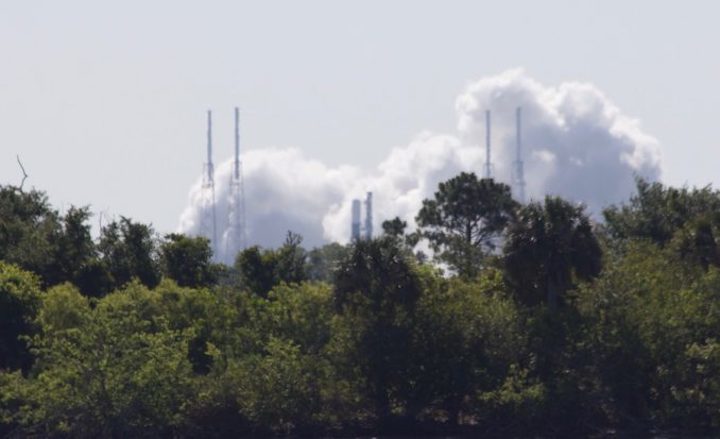
A Falcon 9 rocket's Merlin main engines briefly fired Saturday morning, setting the stage for an early Wednesday launch to the International Space Station, SpaceX confirmed.
The successful static test fire at Cape Canaveral Air Force Station means teams are targeting 3:59 a.m. Wednesday for liftoff from Launch Complex 40 with an uncrewed Dragon spacecraft. The window is instantaneous, so Falcon 9 must launch at that time or delay to another day to meet up with the orbiting ISS.
The Air Force's 45th Weather Squadron expects 80% "go" conditions leading up to the window with the presence of cumulus clouds and the possibility of flight through precipitation as the only concerns.
After liftoff, the rocket's first stage will return to land just offshore from the Space Coast on the Of Course I Still Love You drone ship, according to SpaceX documents filed with the Federal Communications Commission this week. Spectators should at least be able to see the booster's engines fire during the landing burns about 16 miles offshore, but not much else.
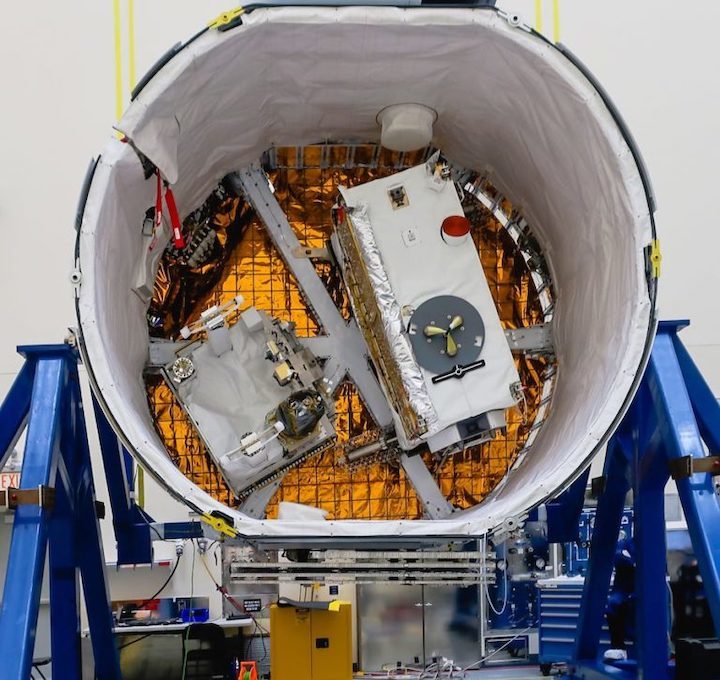
NASA’s Orbiting Carbon Observatory-3 (OCO-3) and the U.S. military’s Space Test Program-Houston 6 (STP-H6) payloads are in view installed in the trunk of SpaceX’s Dragon spacecraft inside the SpaceX facility at NASA’s Kennedy Space Center in Florida on March 23, 2019. Credit: NASA
On board Dragon will be 5,500 pounds of cargo, supplies and science experiments for the ISS crew. Despite sharing some common components, the robotic spacecraft also known as Cargo Dragon differs drastically from Crew Dragon, which suffered an incident last weekend that destroyed the spacecraft designed to take astronauts to the station. Teams were test-firing its SuperDraco engines at the Cape's Landing Zone 1 during the incident, which is why the booster will now land on the drone ship just offshore.
SpaceX this week said it wants to preserve evidence at the site and give teams more time to clear the area of debris and chemicals before allowing more boosters to land there.
Quelle: Florida Today
----
Update: 29.04.2019
.
Port Canaveral open for SpaceX launch viewing on Wednesday, but without parking charge
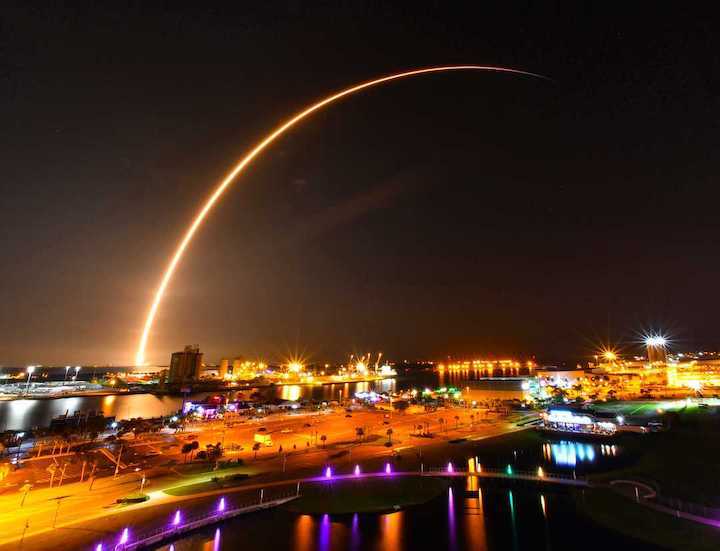
Port Canaveral won't be charging a parking fee for those coming there to view the SpaceX launch scheduled for early Wednesday morning.
That's a change from the April 11 SpaceX launch, when the port charged launch viewers a $15 nonrefundable fee to park there, and initiated a special parking and traffic plan for the launch.
The difference this time around: Wednesday's launch for the SpaceX Falcon 9 rocket is scheduled for 3:59 a.m., and it's not likely there will be a large crowd clamoring for parking spaces at the port at that hour. (In contrast, the April 11 launch of the SpaceX Falcon Heavy rocket was at 6:35 p.m.)
One caveat though: There will be an admission charge for motorists wanting to get into the port's Jetty Park area to view Wednesday's launch ($5 per car for Brevard residents, $15 per car for out-of-county residents). The parking booth opens at 3 a.m. Wednesday at Jetty Park for launch viewers.
Port Canaveral and its Jetty Park are popular viewing areas for rocket launches.
Port Canaveral's Exploration Tower will not be open for Wednesday's launch.
The mission of Wednesday's planned launch of the SpaceX Falcon 9 is to deliver 5,500 pounds of cargo, supplies and science experiments for the International Space Station crew.
Quelle: Florida Today
----
Update: 30.04.2019
.
Ready for sonic booms? NASA, SpaceX targeting early morning for Falcon 9 launch from Cape
Update: SpaceX is now targeting no earlier than 3:11 a.m. Friday, May 3, for the launch of a Falcon 9 rocket from Cape Canaveral Air Force Station.
Early birds – or, in some cases, night owls – observing a Wednesday SpaceX Falcon 9 mission from Cape Canaveral should see the faint glow of the rocket's booster return to land on a drone ship just off the Space Coast, generating its signature sonic booms on the way.
Those still sound asleep, meanwhile, could be awoken by the triple booms about eight minutes after the 3:59 a.m. liftoff, which will signal the booster's descent toward the Of Course I Still Love You drone ship some 16 miles off the coast of Port Canaveral. Taking off from Launch Complex 40 will be a Dragon spacecraft packed with thousands of pounds of supplies and science experiments for the International Space Station.
The booster was originally supposed to land at Cape Canaveral Air Force Station's Landing Zone 1, but a testing incident involving a Crew Dragon capsule on April 20 left the site littered with debris and evidence that will be necessary to draw up a timeline of what happened. Crew Dragon is a newer human-rated version of the Dragon spacecraft launching Wednesday, though the two do share some common components.
Though the landing zone will be 10 miles more distant than if the booster had returned to LZ-1, spectators should still be able to see the glow of its landing burns at around 4:07 a.m.
On the ISS, meanwhile, the crew is troubleshooting an issue with station power systems, NASA said Monday.
"There are no immediate concerns for the crew or the station," the agency said in a statement. "An issue is being worked with a Main Bus Switching Unit (MBSU) that distributes electrical power to two of the eight power channels on the station."
Discussions are underway, NASA said, to determine whether or not there will be any impacts to SpaceX's Wednesday morning launch.
The cargo Dragon involved in the flight, SpaceX's 17th under the Commercial Resupply Services Contract, previously flew to the station in August 2017. The booster, meanwhile, is brand new.
Weather conditions are 80% go for the attempt, according to the Air Force.
For this flight, Dragon will carry more than 5,500 pounds of research and cargo equipment needed to support dozens of more than 250 science investigations. Some of those include:
• NASA's Orbiting Carbon Observatory-3 (OCO-3), which will measure and map the carbon dioxide on Earth, will be installed robotically on the exterior of the station.
• The ISS will be home to the new Hermes Facility, a reconfigurable testing facility that will mainly serve to understand the formation and behavior of asteroids and comets.
• Scientists from the National Institutes of Health will send Tissue Chips in Space, a tiny bioengineered device containing living human cells with the hope of understanding and modeling diseases while also testing drug treatments. If successful, the tissue chip technology could eliminate the necessity of having drugs tested on humans or animals while still generating realistic results, scientific program manager at the National Center for Advancing Translational Sciences Lucie Low said.
• Winners from the 2018 Genes in Space STEM competition, — a science, technology, engineering and mathematics educational program available to high school students for a chance to conduct research on the ISS — will study how cells repair their own DNA in space, which will help protect astronauts from radiation and set the stage for genomic editing in space.
Contact Jaramillo at 321-242-3668 or antoniaj@floridatoday.com. Follow her on Twitter at @AntoniaJ_11.
Support local journalism: Subscribe to FLORIDA TODAY at floridatoday.com/subscribe
Launch Wednesday
- Rocket: SpaceX Falcon 9
- Mission: Dragon ISS resupply
- Launch Time: 3:59 a.m.
- Launch Window: Instantaneous
- Launch Complex: 40 at Cape Canaveral Air Force Station
- Landing: Yes, Of Course I Still Love You drone ship
- Weather: 80% "go"
Join floridatoday.com/space for countdown updates and chat starting at 2:30 a.m. Wednesday, including streaming of SpaceX’s launch webcast 30 minutes before liftoff.
Quelle: Florida Today
----
Update: 1.05.2019
.
SpaceX resupply launch delayed by malfunction on space station
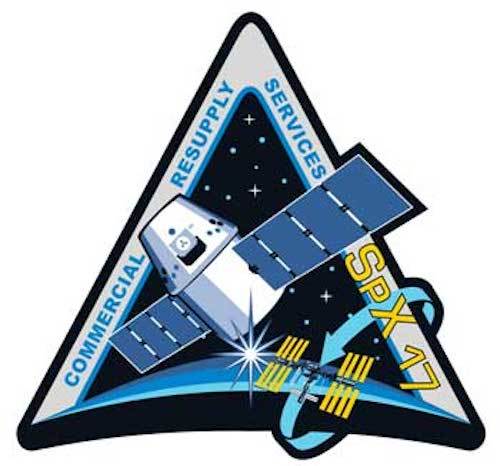
A SpaceX Dragon supply ship packed with nearly three tons of experiments, crew provisions and supplies will remain on the ground until at least Friday morning to allow more time for NASA flight controllers to troubleshoot a problem with an electrical distribution unit on the International Space Station.
Multiple sources said Monday that the commercial resupply launch from Cape Canaveral, previously scheduled for Wednesday, will be pushed back at least two days to no earlier than Friday at 3:11 a.m. EDT (0711 GMT).
NASA confirmed the launch delay Tuesday.
The delay will allow time for NASA flight controllers at the Johnson Space Center in Houston to continue troubleshooting an issue with a distribution box in the space station’s electrical power system. Engineers detected an issue with the Main Bus Switching Unit on Monday morning, and ground teams plan to replace the component later this week, ahead of the SpaceX cargo launch.
“Teams are working on a plan to robotically replace the failed unit and restore full power to the station system,” NASA said in a statement Tuesday. “The earliest possible launch opportunity is no earlier than Friday, May 3.”
The Main Bus Distribution Unit is one of several that routes power from the space station’s U.S. solar arrays to the research outpost’s electrical channels. The suspect unit distributes power to two of the eight electrical channels on the station, including a power supply for the space station’s robotic arm, which the station astronauts will use to capture the Dragon cargo craft as it approaches the complex.
While the robotic arm remains powered through a separate channel, NASA flight rules require redundant power supplies for the arm during critical operations, such as the grapple of a free-flying spacecraft.
Ground teams have replaced a failed Main Bus Switching Unit using the station’s robotic arm before. The capability to robotically replace the power distribution box means astronauts will not have to conduct a spacewalk for the task.
The electrical system glitch does not pose any immediate concern to the station or its six-person crew, NASA said.
“Flight controllers have been working to route power through the remaining six power channels,” NASA said in a previous statement released Monday. “Electrical power generated by the station’s solar arrays is fed to all station systems through these power channels.”
If the Dragon spacecraft had launched Wednesday, it was due to arrive at the station early Saturday. Assuming a launch from Cape Canaveral on Friday morning, the Dragon cargo freighter is scheduled to reach the complex early Sunday.
Forecasters with the U.S. Air Force’s 45th Weather Squadron predict a 60 percent chance of favorable conditions for Friday’s predawn launch opportunity, which is timed for when the space station’s orbital plane passes over Cape Canaveral.
An outlook issued Tuesday identified concerns that weather at Cape Canaveral could violate weather rules relating to cumulus clouds, thick clouds and flight through precipitation.
Quelle: SN
----
Update: 3.05.2019
.
CRS 17 MISSION
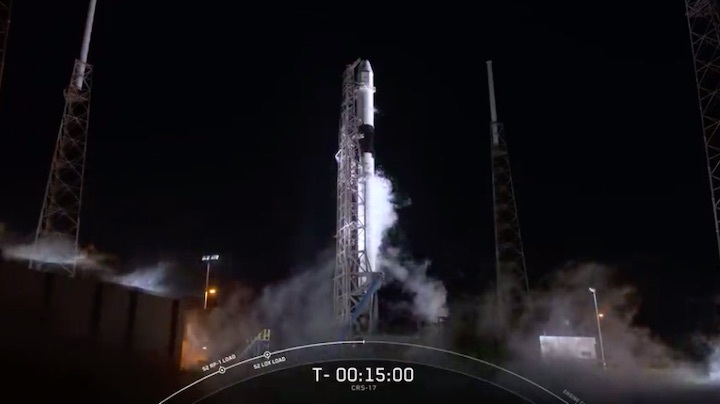
SpaceX is targeting Saturday, May 4 for an instantaneous launch of its seventeenth Commercial Resupply Services mission (CRS-17) at 2:48 a.m. EDT, or 6:48 UTC, from Space Launch Complex 40 (SLC-40) at Cape Canaveral Air Force Station, Florida. Dragon will separate from Falcon 9’s second stage about 9 minutes after liftoff and attach to the space station on Monday, May 6.
The Dragon spacecraft that will support the CRS-17 mission previously supported the CRS-12 mission in August 2017. Following stage separation, SpaceX will attempt to recover Falcon 9’s first stage on the Of Course I Still Love You droneship, stationed in the Atlantic Ocean.
Quelle: SpaceX
----
Update: 4.05.2019
.
Frams von Launch-Video:
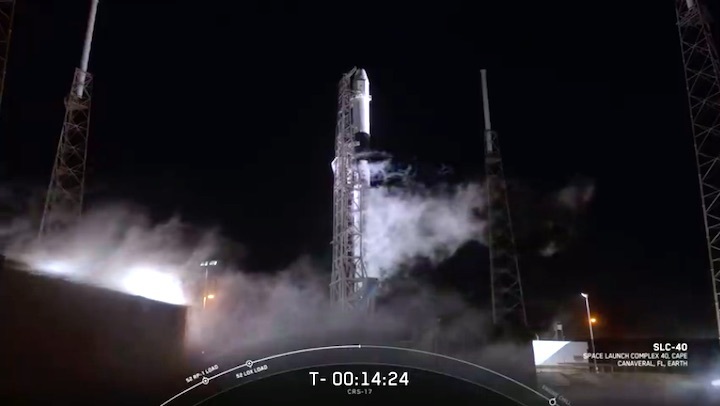
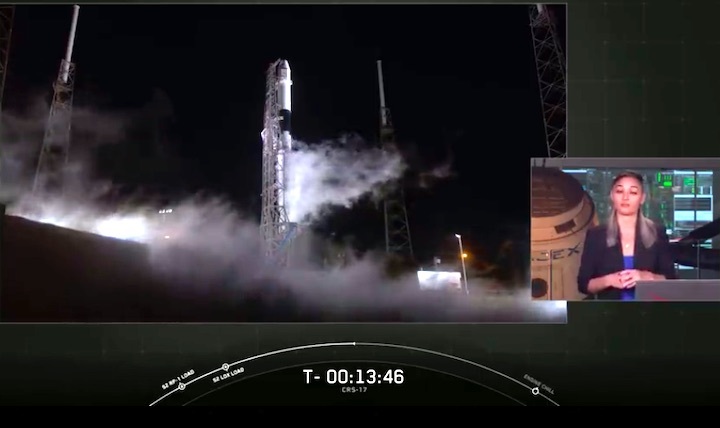
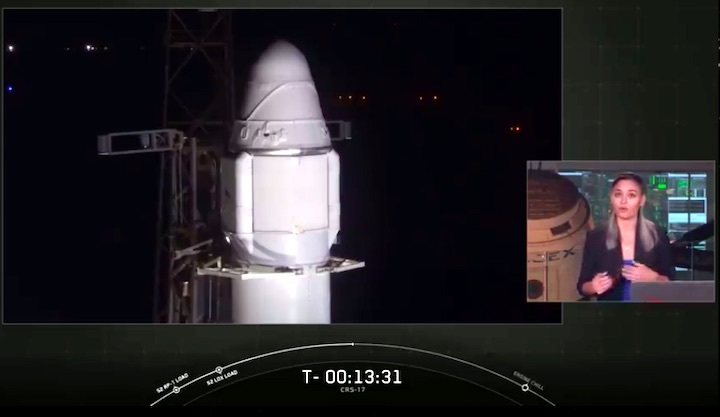
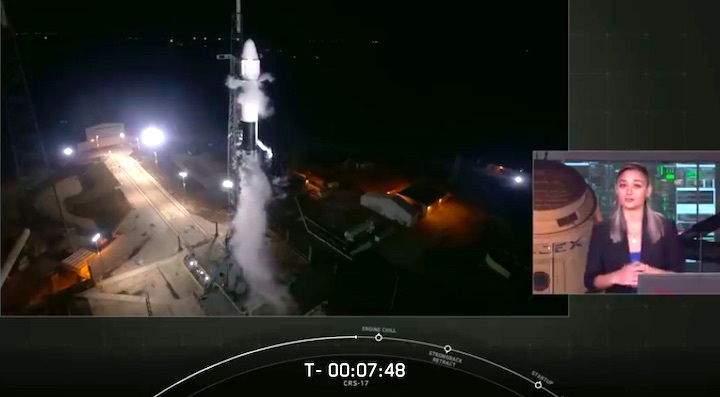
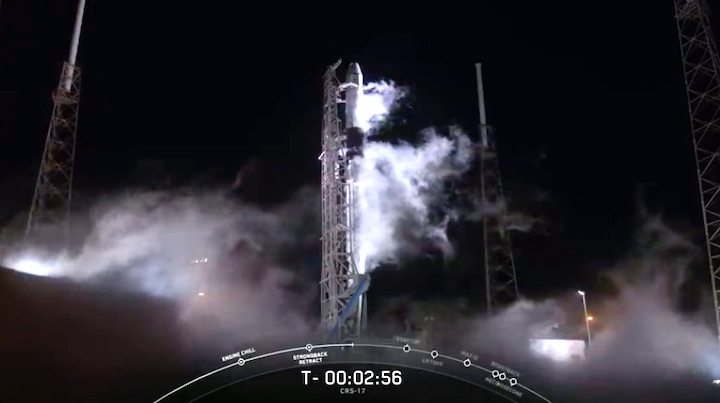
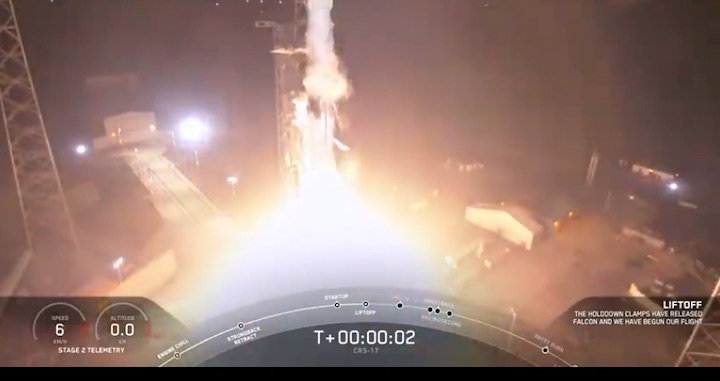
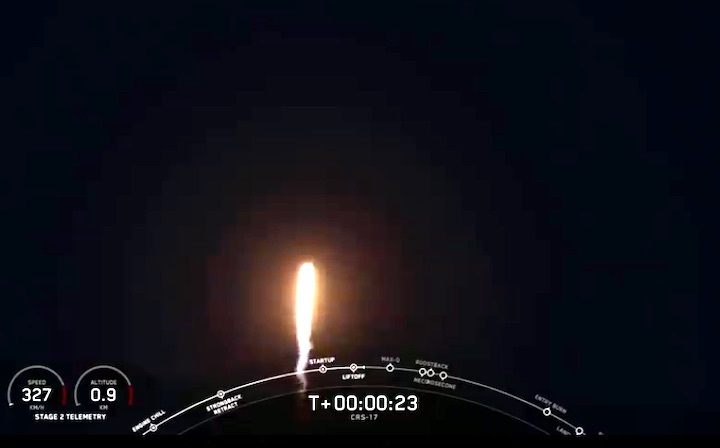
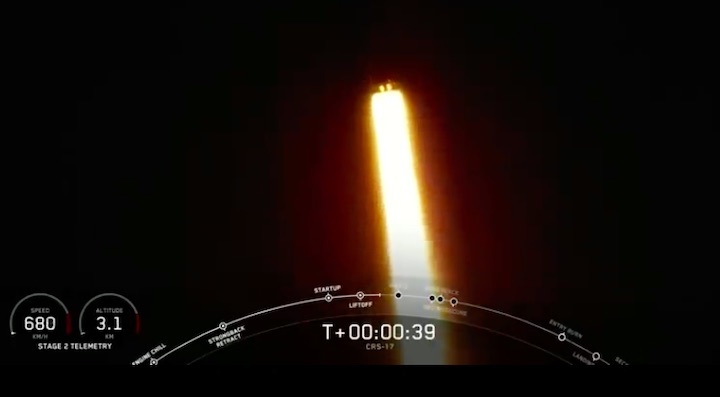
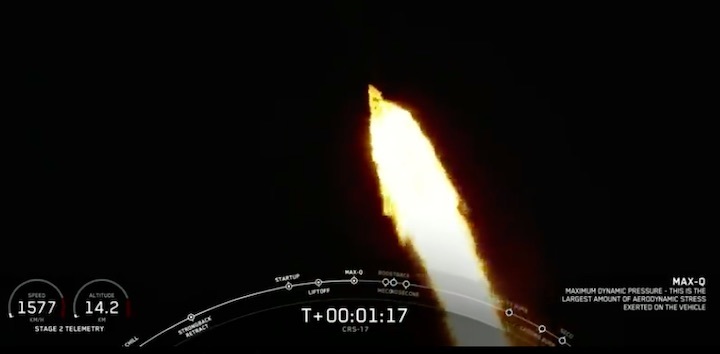
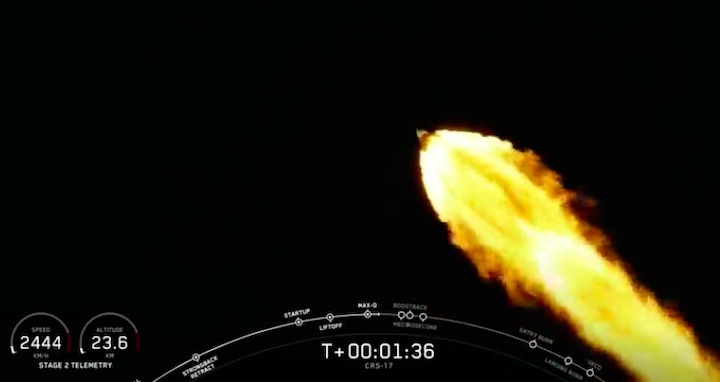
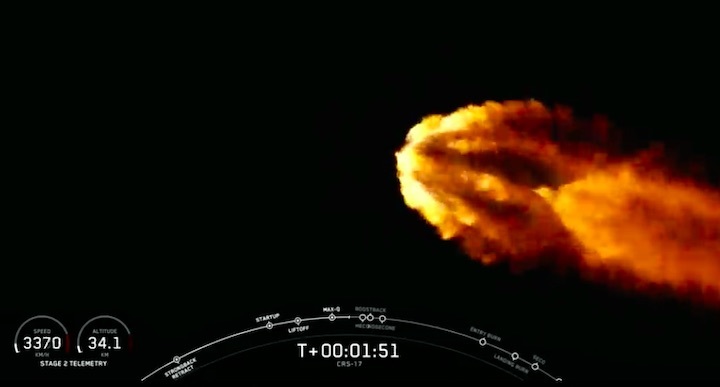
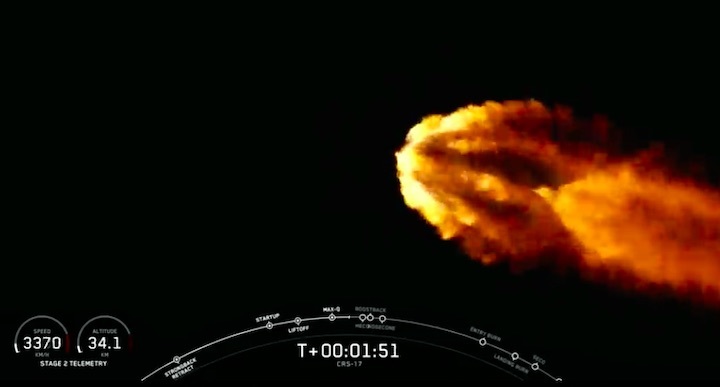
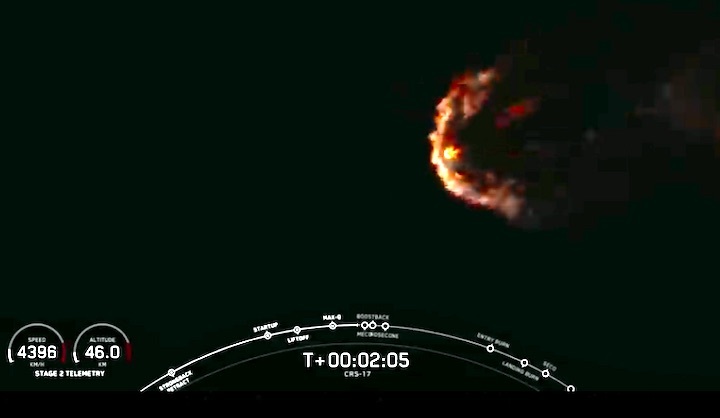
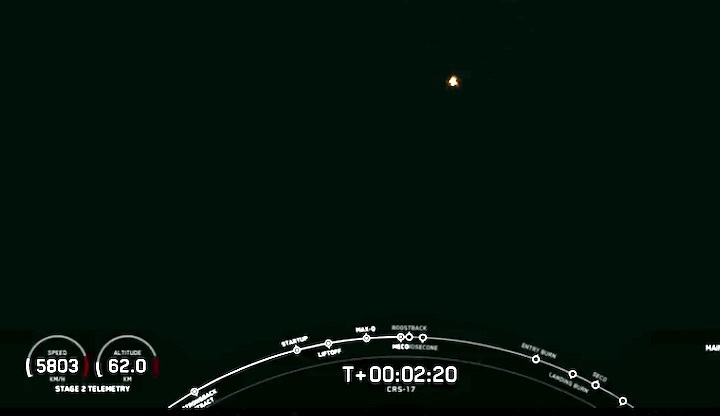







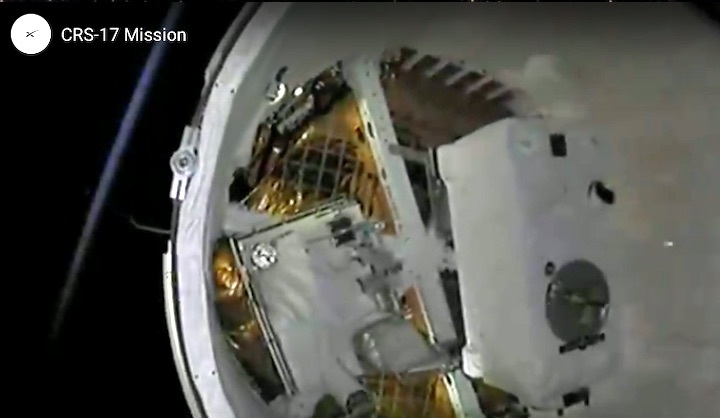
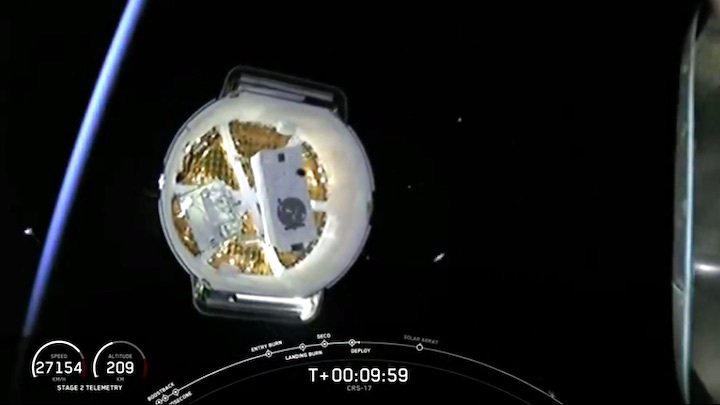
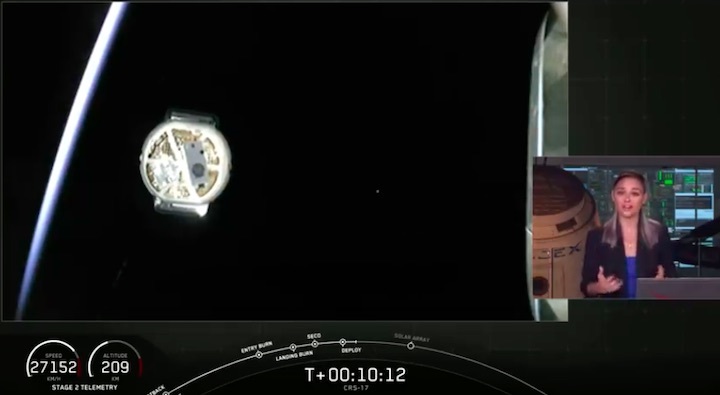
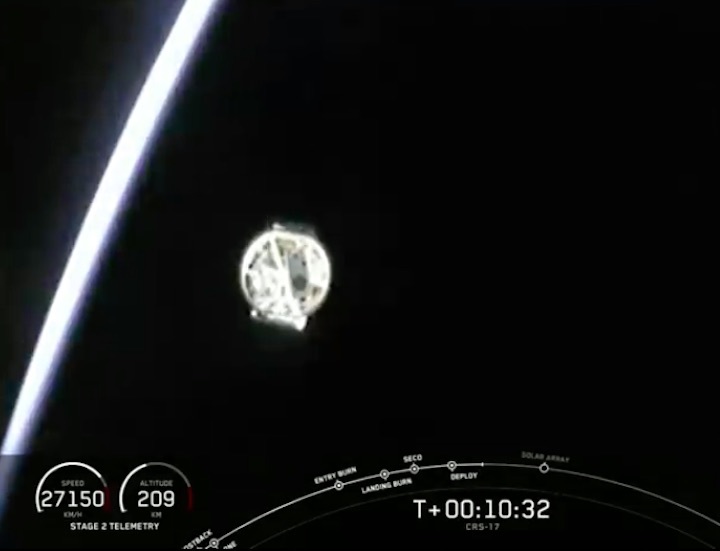


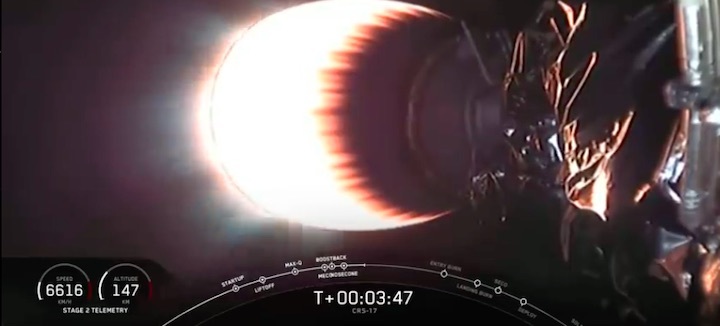
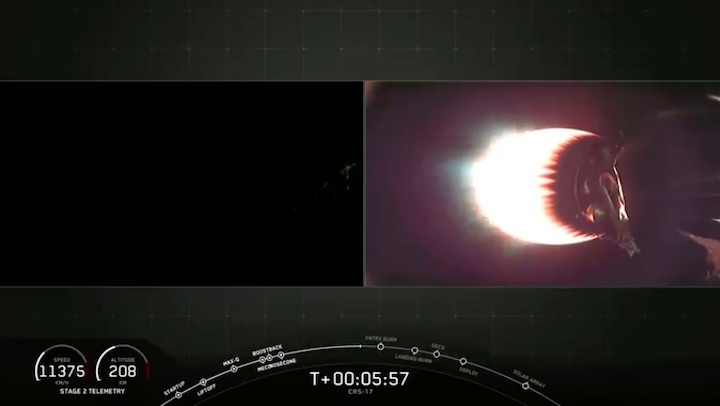

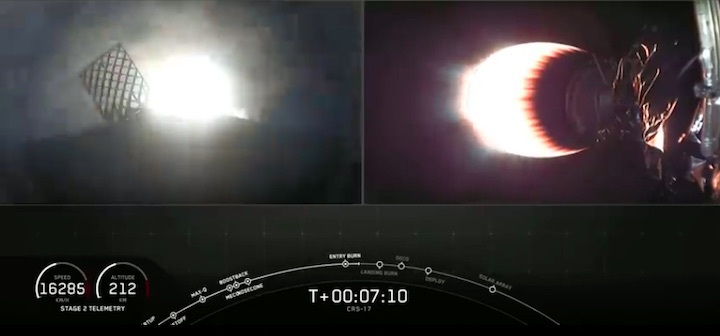
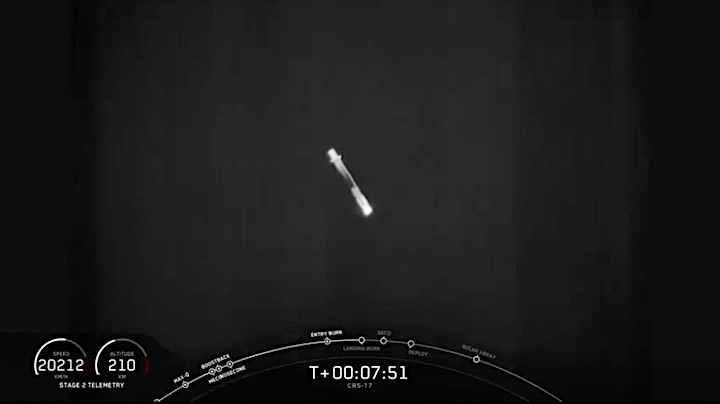
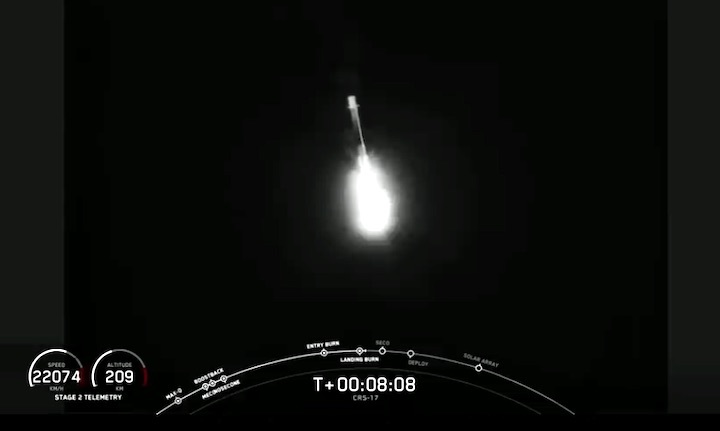
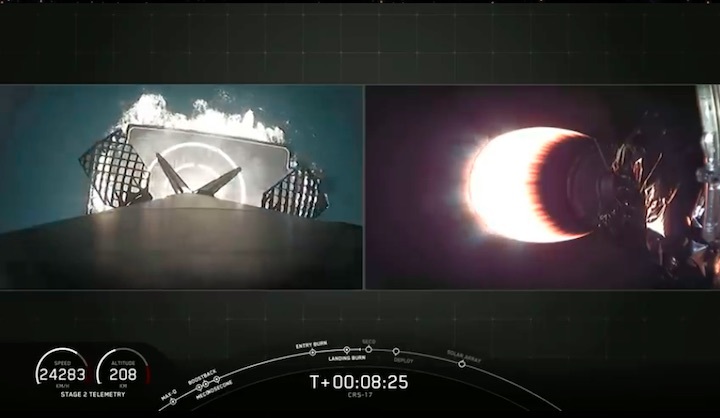

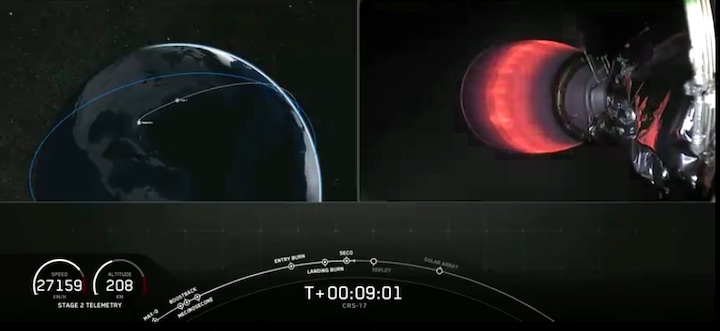
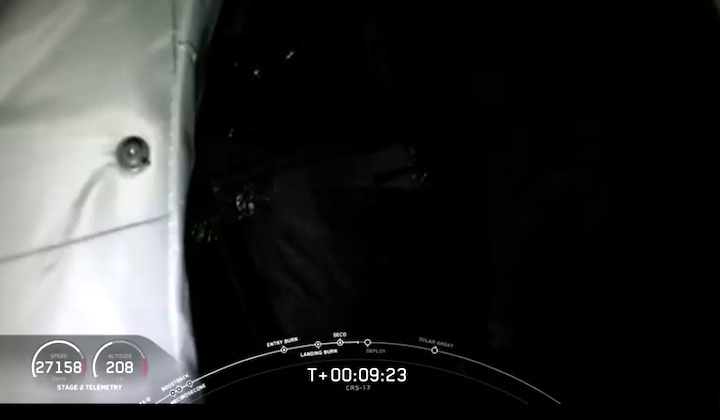
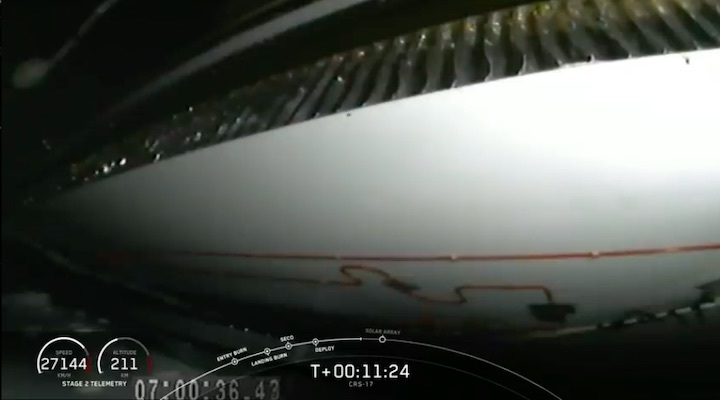
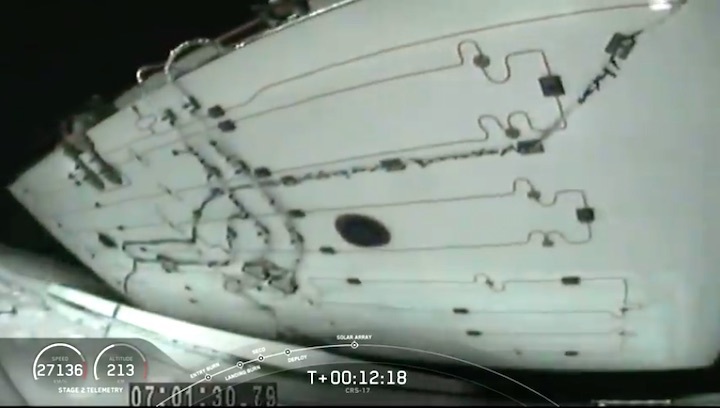
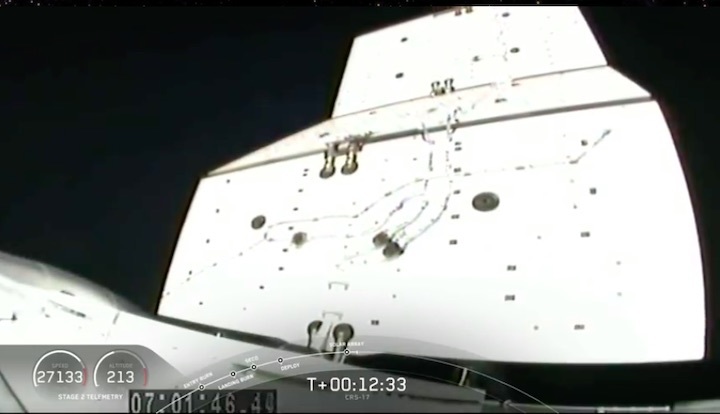
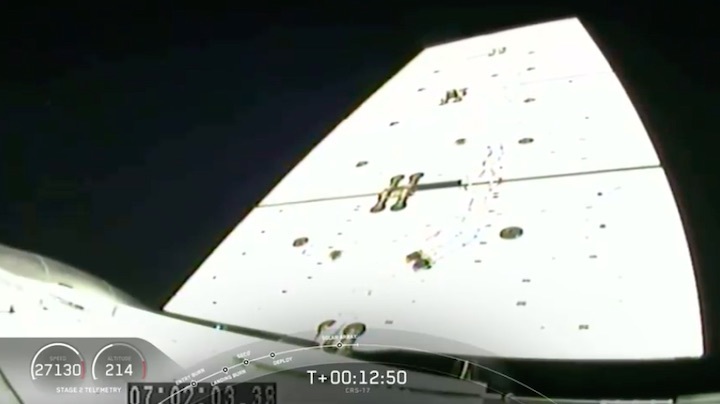
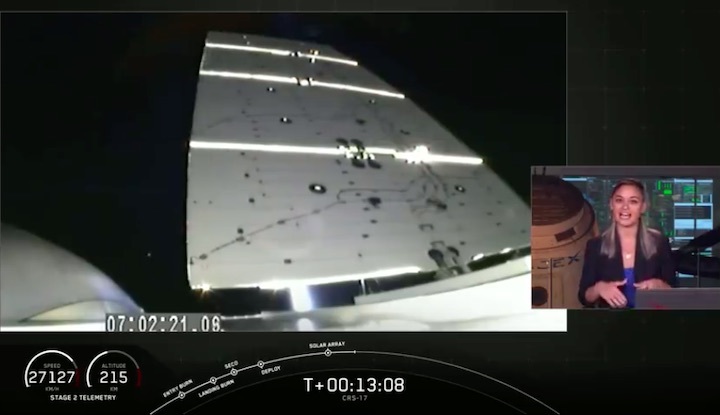
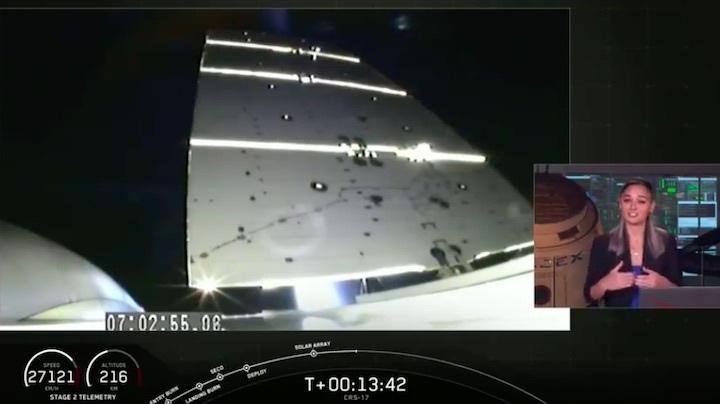
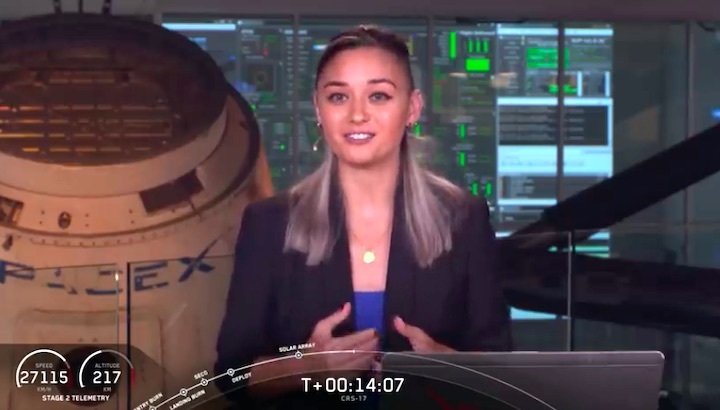
Quelle: SpaceX
